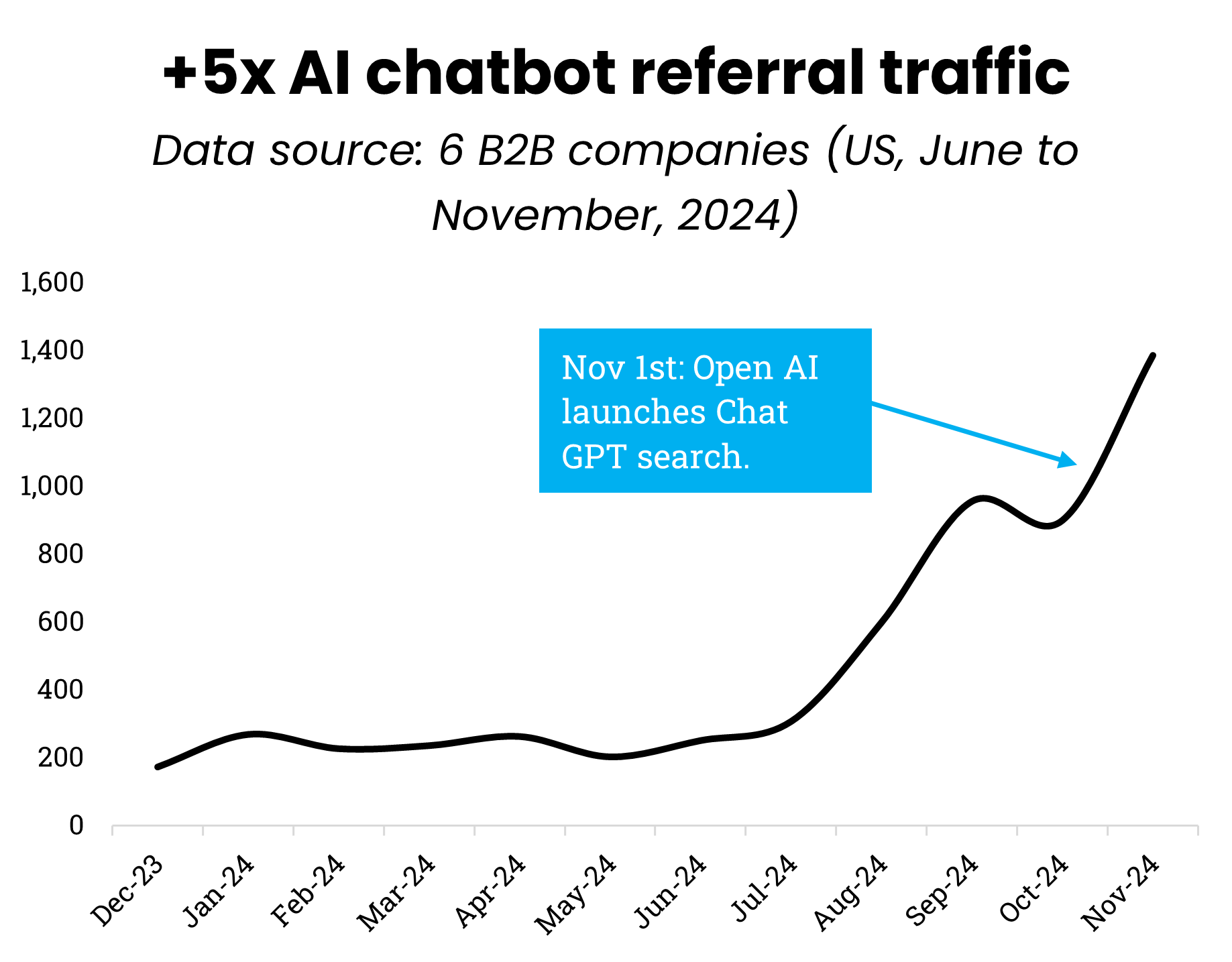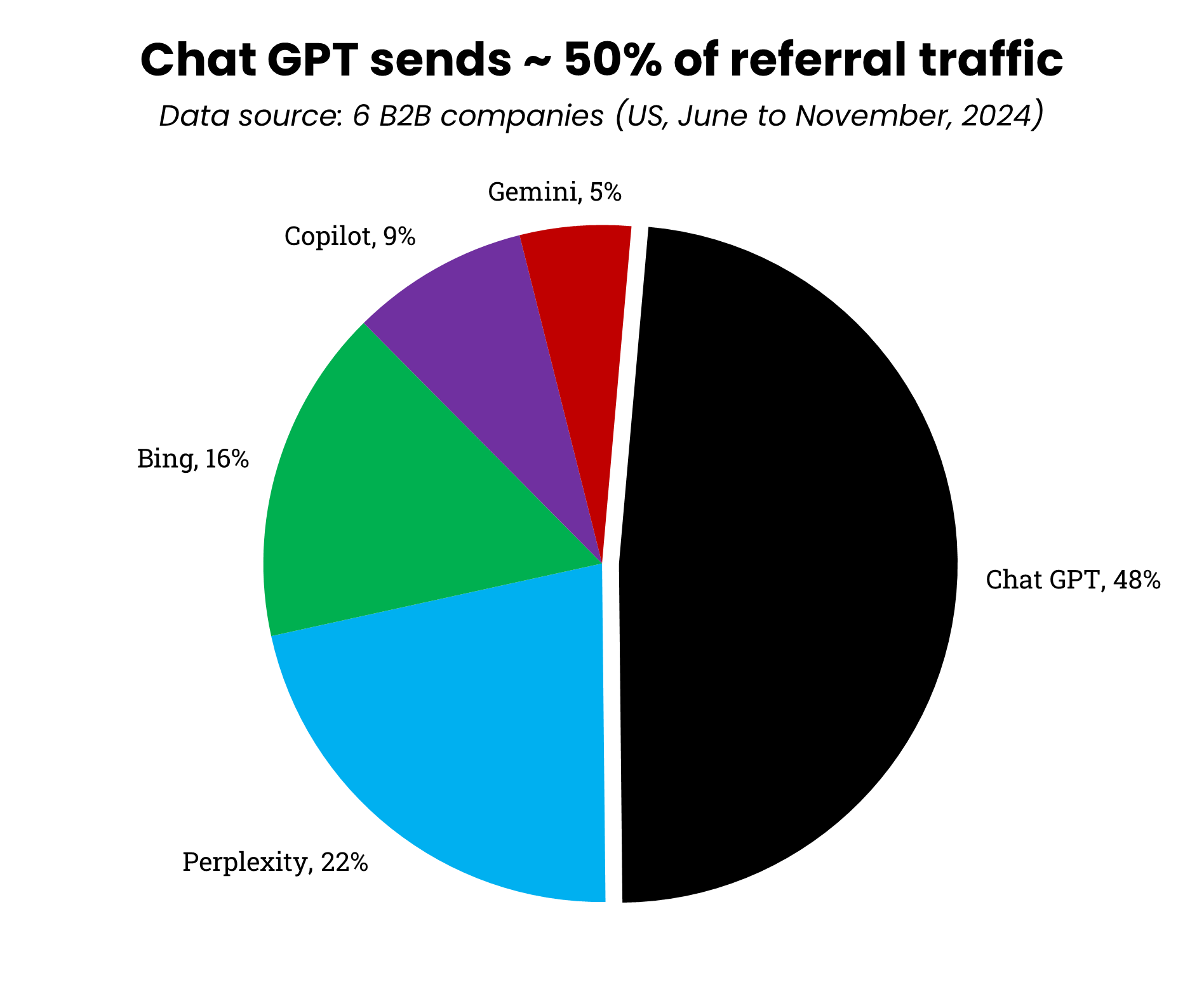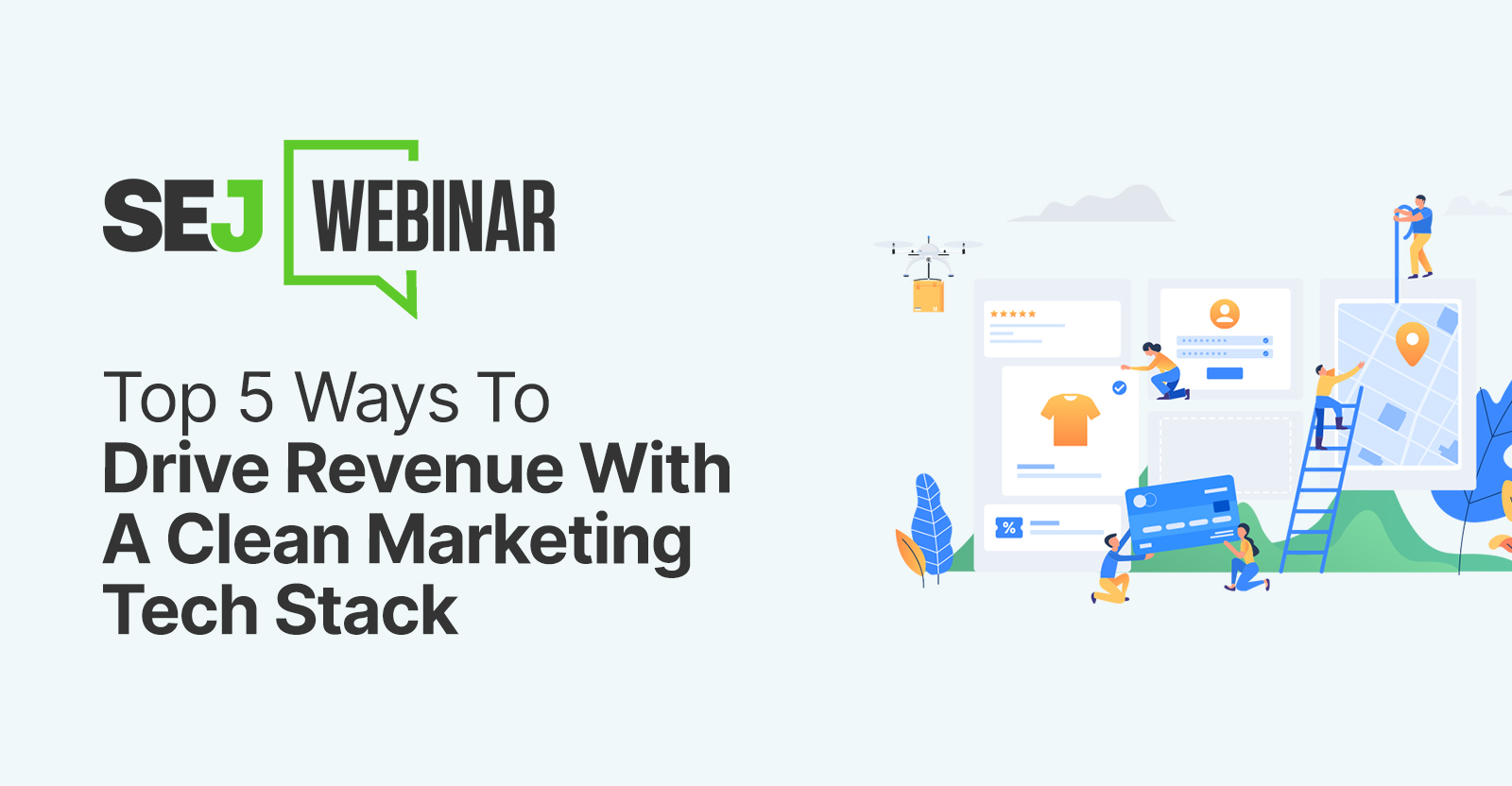How Significant Is AI Chatbot Traffic In B2B? via @sejournal, @Kevin_Indig
Dive into this mini case study where Kevin Indig explores the ideal timing for B2B companies to invest in AI chatbots for long-term growth. The post How Significant Is AI Chatbot Traffic In B2B? appeared first on Search Engine...

The first commercial power plant had only 59 customers when Thomas Edison built it in 1882.
Eighteen years later, access to electricity had already expanded to 3.8 million U.S. Americans (5% of households).1 From there, power grid access grew exponentially:
8% in 1907. 35% in 1920. 68% in 1929.We stand at the doorstep of a comparable technology: AI.
ChatGPT is the second fastest-growing consumer product. Capital expenditures of hyperscalers could exceed $300 billion in 2025.2 AI already makes consultants, writers, and financial experts more efficient. A joint report by Semrush and Statista found that 1 in 10 U.S. internet users go to gen AI for search first before exploring search engines.But when is the right time for B2B companies to invest in AI chatbot visibility?
For companies with limited resources, investing in technology too early can be a costly distraction (pets.com). Being too late can cost even more (Kodak).
B2B is a particularly interesting case for three reasons:
Longer sales cycles. High competition. AI chatbots answer a lot of information queries directly that used to bring traffic from Google. Ecommerce, for example, is different because searches either start on Amazon directly or shopping is natively integrated (see Perplexity shopping or Google’s new experience).I analyzed referral traffic from the biggest AI chatbots to six B2B companies with a combined traffic volume of over 1 million monthly visits.
The data shows an average of 0.14% when comparing AI chatbot referrals to organic visits. That’s one referral for every 714 organic visits. Peanuts.
But in the next three years, AI chatbot referral traffic could make up over 35% of organic traffic. As a result, companies would do well to develop playbooks for growing visibility now to benefit from first-mover advantages.
How Much Traffic Do AI Chatbots Send?
 Image Credit: Kevin Indig
Image Credit: Kevin Indig
In my case study of six B2B companies, referral traffic from AI chatbots has grown from an average of 250 visits per month in the first half of 2024 to over 1,300 in November (+5x).
The drivers are growing usage of AI chatbots, more links to sources, and OpenAI’s introduction of its AI search engine, ChatGPT Search.
 Image Credit: Kevin Indig
Image Credit: Kevin Indig
Almost unsurprisingly, ChatGPT sends the most referral traffic, with almost 50%.
Perplexity comes in 2nd at 21.7%.
Gemini sits in a surprisingly distant fifth place.
Even Bing and Copilot send more traffic, even though Gemini was built by search monopoly Google. It’s unclear whether usage or design is responsible for Gemini’s low referral traffic.
Even though AI chatbot referral traffic is growing rapidly, it makes up only 0.34% in comparison to organic traffic.
For some companies, it’s as low as 0.09%, and for others, it’s as high as 0.9%. It’s easy to dismiss referral traffic from AI chatbots because of their miniscule size.
Every smart manager would categorize such a small customer acquisition channel as a distraction. And yet, it’s a mistake.
Referral traffic from AI chatbots grows at a staggering monthly average of 25.6%.
As humans, we’re inherently bad at understanding compound growth because most of our environment is linear (distance, time, etc.).
An annual growth rate of 7% seems harmless until you realize it doubles growth in 10 years.
Only 14% of U.S. Americans have tried ChatGPT.3 They’re early adopters.
Over 170 million more could join the trend in the next years (assuming 334 million Americans minus ~35% for age), which should skyrocket referral traffic even more. And that’s just the U.S.
On the flipside, organic traffic is flat to down for many B2B companies. In my sample set, organic traffic grew only 1.1x between January and November on average.
 Image Credit: Kevin Indig
Image Credit: Kevin Indig
When considering constant growth rates, over one-third of organic traffic could come from AI Chatbots in three years.
In the sum total, AI chatbot referrals would make up over 34% of traffic. Two companies in my set of six are projected to get more than double as much traffic from AI chatbots than from search engines.
Referral to organic traffic ratio projections:
Today: 0.14% (January – November). In a year: 0.79%. In two years: 5.7%. In three years: 52%.Note that we don’t yet know whether AI chatbots cannibalize search engine usage one-to-one or whether we’ll do both.
I have a hunch it’s going to be the latter because AI adoption will happen in phases, and overall usage could increase because LLMs are so capable.
That’s also why my projection chart has a higher total as AI chatbot adoption grows in year 3, which means more potential traffic for B2B companies instead of less.
Of course, this is a small case study of only six B2B companies, and growth rates likely won’t stay constant.
Most projections are wrong, but this exercise helps to put in perspective how quickly the status quo can change.
Implications
My advice is clear: Don’t bank on steam engines. Bank on the power grid.
AI chatbots show early signs of compound growth that could become significantly faster than we can intuitively grok.
Here is what I tell my (B2B) clients:
Monitor LLM crawlers, referral traffic, and conversions by landing page to figure out which content gets crawled and performs well in AI chatbots. Track your keywords as questions with a house-made, API-based tracking system or proprietary LLM tracking tools. Monitor visibility ChatGPT, Perplexity, Copilot/Bing, and Gemini because we don’t yet know whether “AI chatbot optimization” will lead to the same results for all chatbots, similar to how SEO is very similar for Google and Bing or whether they will reward different approaches. Test net-new content and content adjustments to provide better answers in AI chatbots. Now is the time to write the playbook. Keep doing classic SEO since AI chatbots still lean heavily on their results to ground answers.1The Residential Adoption of Electricity in Early Twentieth-Century America
3A majority of Americans have heard of ChatGPT, but few have tried it themselves
Featured Image: Paulo Bobita/Search Engine Journal

 BigThink
BigThink 































